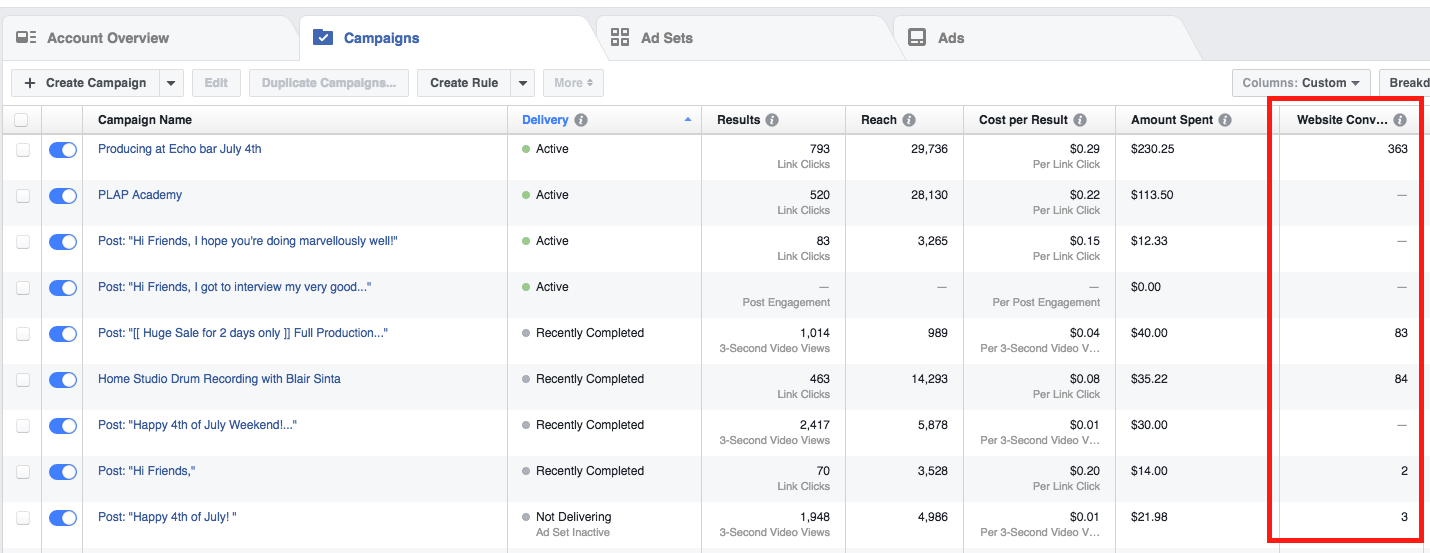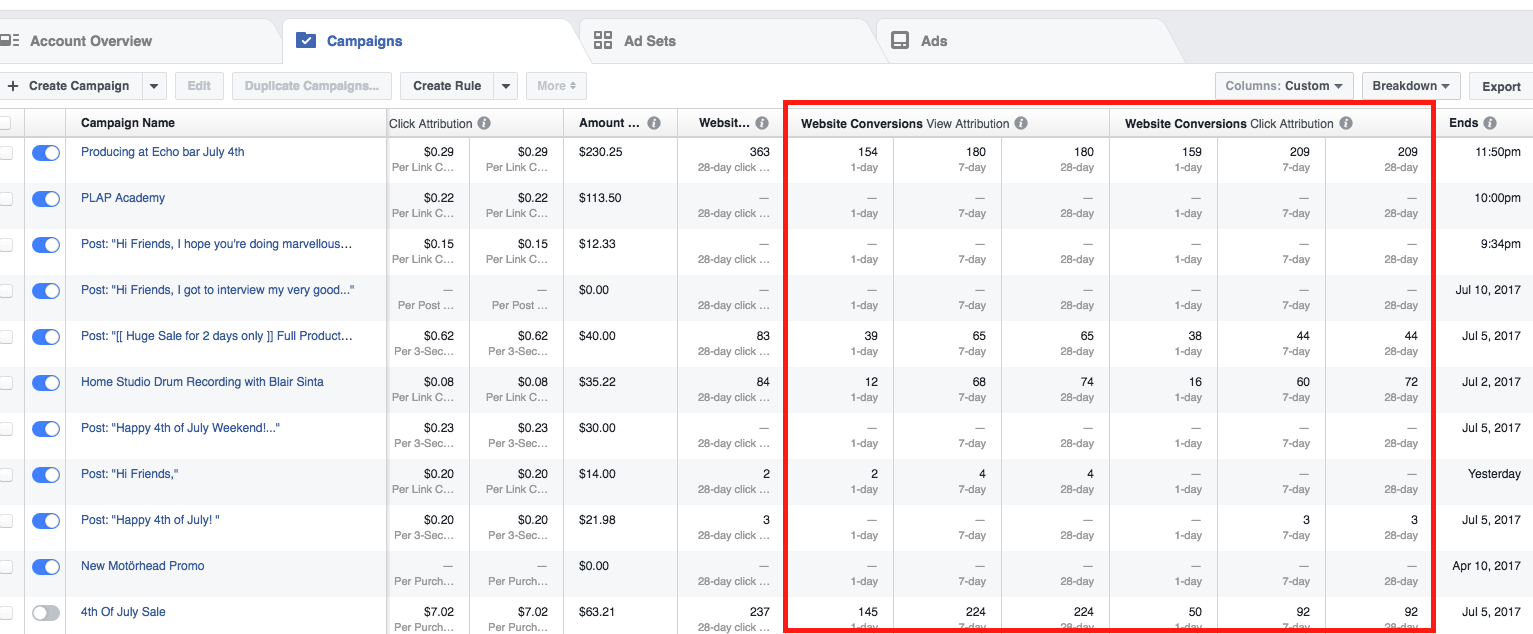May 21, 2024
Understanding Conversion Attribution in Facebook Ads
By Megalytic Staff - August 24, 2017

Defining Attribution
First, let’s define the concept of attribution. In digital marketing speak, attribution is the science of determining what sources led to a conversion. Think about the “funnel” of events that occur before someone decides to fill out a form. They may visit a site from both Facebook and Google search before contacting the company. They may even interact multiple times on a single channel, for example, clicking a paid Facebook ad liking the page, and later clicking an organic Facebook post.
While a full explanation of attribution models is a topic for another post, various types of attribution exist: last-click (the last source a user came from before converting), first-click (the first source a user came from), and other methods that divide out the credit among multiple sources. In addition, some platforms credit a conversion when an ad is simply viewed at some point before a user completes an action, while others only credit a conversion after an ad is clicked .
When looking at results from Facebook Ads, it’s important to understand that, by default, Facebook counts both view-through and click conversions. The inclusion of view-through conversions is one factor that can result in discrepancies between data in Facebook Ads and goal counts in Google Analytics.
In addition, Facebook ties conversions to individual users based on Facebook account logins, as opposed to Google Analytics using a combination of cookies and Google logins. There may be cases where Facebook may track an individual as having previously seen an ad, where Google wouldn’t credit the user.
With that in mind, let’s dive into how to attribute your conversions.
Differentiating Click vs. View Conversions
When you first look at the “Website Conversions” column in Facebook, you’ll see a total breakdown of conversions, which include both view and click results. The default total includes cases in which a user converted within 28 days after clicking an ad or 1 day after viewing an ad.
Thankfully, Facebook offers a way to break down view-through conversions from click conversions. When you go to the Customize Columns section from the Columns dropdown, select the “Comparing Windows” option on the bottom right. Here, you can choose to display separate columns for view and click conversions, while also breaking down by conversion windows (within 1, 7, or 28 days).
Now, you’ll see separate columns for each of these categories. The numbers will vary based on both the type of conversions and the timeframe. While there were 363 total conversions counted (again, remember that this includes 28-day click conversions and 1-day view conversions), a maximum of 209 conversions can be attributed to people who clicked ads and then converted. An additional 180 can be attributed to ad views within a longer timeframe.
While it’s a useful feature, be cautious in attributing too much to view-through conversions. You shouldn’t ignore these entirely because seeing an ad but not interacting can certainly lead to brand awareness and a later conversion. You also don’t know for sure if the ad was really seen or just scrolled past. This is especially true when you’re remarketing to people who may have previously interacted with a brand in another way. Those users may return from a different source and view-throughs can tend to be inflated. So that’s why it’s often best to segment click conversions for reporting purposes..
Also, think about the time factor; 28 days later, a user may not remember they viewed a Facebook ad. However, a click meant they intentionally interacted, with more proof that the ad drove engagement from a potential customer.
Discrepancies with Google Analytics
When looking at Facebook Ad results in Google Analytics , note that Google Analytics will only attribute conversions where a user clicked through to the site and then converted from Facebook. However, this number could still differ from the “click” conversion numbers in Facebook because Facebook itself will attribute conversions for a longer timeframe after the click.
If a user clicked a Facebook ad and came back from an organic search to fill out a form, that lead would show as an organic conversion in Google Analytics since that was the final source. However, Facebook would still attribute that conversion within the Ads Manager interface because the Facebook Pixel would connect the person to having clicked an ad at some point.
So, you can pick one number to present to a client (perhaps only Facebook click-through conversions to play on the safe side, while still giving Facebook fair credit) or present all numbers from all sources and explain the reasons for potential discrepancies. Depending on the technical level of your client, you may use your discretion to pick the best number to present. However, if you feel they can understand the differing levels of tracking between sources, the ideal option would be to present both sources and explain that conversion tracking can be an inexact science. Your goal as a marketer is to use the resources available to pinpoint the closest numbers possible, while still maintaining the most accuracy that you can.
Ultimately, the goal is to use this data to prove an ROI on efforts and to refine future strategies. By isolating trends in copy, imagery or other forms of content that did successfully drive clicks and conversions, you can hone in on what works to replicate those themes in your upcoming campaigns.
Conclusion
Facebook remains one of the most powerful digital advertising channels available because it gives you the ability to target your ideal audience. However, like most channels, it’s imperative to drill down and find the best way to attribute the value it presents to your client’s business. Remember to assign the proper values to your click-through and view-through conversions as you break down your metrics and ensure that you’re not assigning too much value to one or the other. Make sure that you are accurately assessing the true value of your conversions because it will create transparency in your reporting and more accuracy in your analysis. Combined, it will make for a happier client, a better relationship and you’ll be able to better optimize your campaigns for future success.


